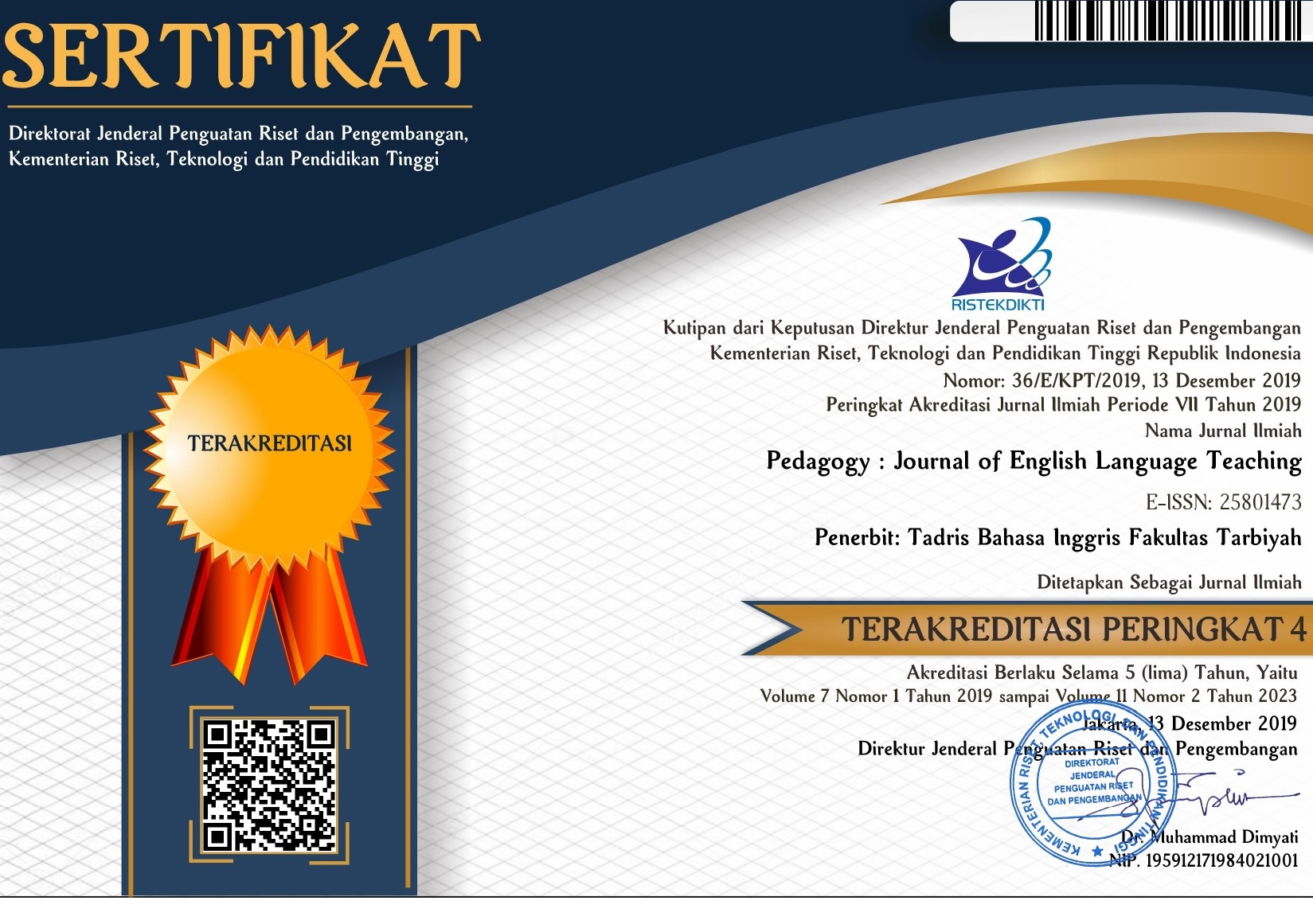Appreciating Students’ Responses: Verbal and Non-Verbal Compliments Used by English Teachers in Classroom
DOI:
https://doi.org/10.32332/joelt.v9i2.3650Keywords:
English classroo, English Language Teaching, students' responses, non-verbal compliments, verbal complimentsAbstract
Many scholars have investigated how teachers interact with students in the ELT classroom, such as teacher talks and teacher reinforcements. This study aims at investigating the verbal and non-verbal compliments used by the English teachers in the EFL classroom. This study deployed a case study method that involved two English teachers at a state junior high school in Seluma regency, Bengkulu Province, Indonesia. The instruments used in this study were an observation sheet, video recording, and unstructured interview. The observation was done for three meetings for each teacher. The data were analyzed using the interactive data analysis model. The results show that the English teachers used five types of verbal compliments (e.g., good, very good, well done, that’s right, and nice) and non-verbal compliments (e.g., hand movements, head movements, facial expression, touching the students, and standing near the students) to show their appreciation to the students’ responses. In conclusion, the English teachers have used some verbal and non-verbal compliments, but they should use more diverse types of verbal and non-verbal compliments to build students’ performances in the ELT classroom. This study gives new insights for English teachers about the types and importance of compliments to boost the students’ participation, motivation, and interaction in classroom activities.
















